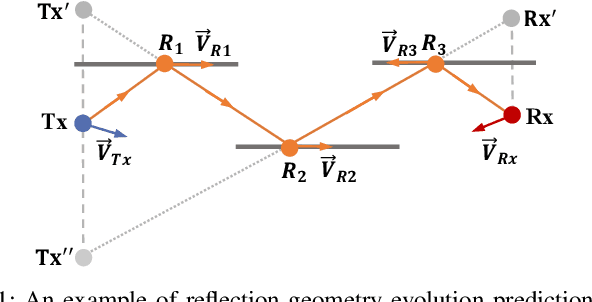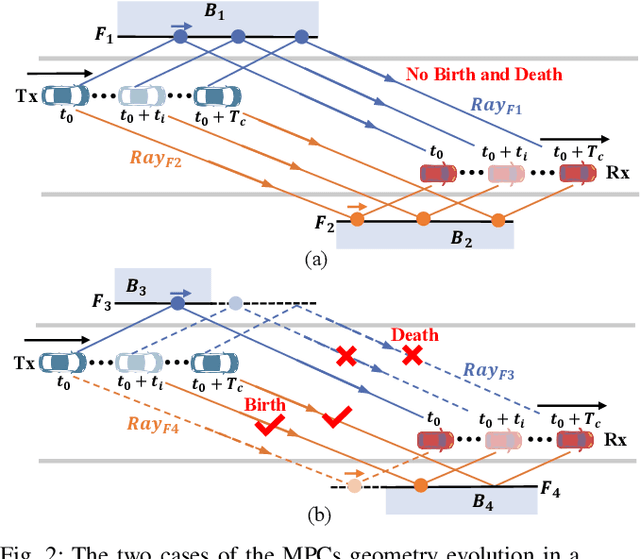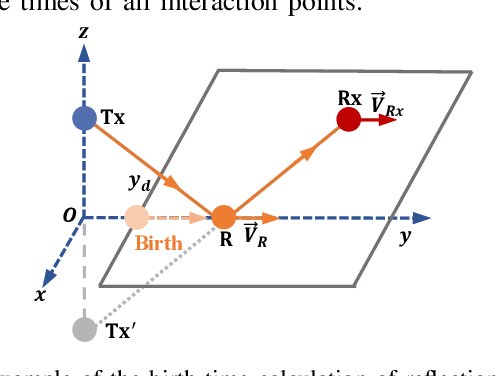Yinghe Miao
Road to 6G Digital Twin Networks: Multi-Task Adaptive Ray-Tracing as a Key Enabler
Feb 20, 2025Abstract:As a virtual, synchronized replica of physical network, the digital twin network (DTN) is envisioned to sense, predict, optimize and manage the intricate wireless technologies and architectures brought by 6G. Given that the properties of wireless channel fundamentally determine the system performances from the physical layer to network layer, it is a critical prerequisite that the invisible wireless channel in physical world be accurately and efficiently twinned. To support 6G DTN, this paper first proposes a multi-task adaptive ray-tracing platform for 6G (MART-6G) to generate the channel with 6G features, specially designed for DTN online real-time and offline high-accurate tasks. Specifically, the MART-6G platform comprises three core modules, i.e., environment twin module to enhance the sensing ability of dynamic environment; RT engine module to incorporate the main algorithms of propagations, accelerations, calibrations, 6G-specific new features; and channel twin module to generate channel multipath, parameters, statistical distributions, and corresponding three-dimensional (3D) environment information. Moreover, MART-6G is tailored for DTN tasks through the adaptive selection of proper sensing methods, antenna and material libraries, propagation models and calibration strategy, etc. To validate MART-6G performance, we present two real-world case studies to demonstrate the accuracy, efficiency and generality in both offline coverage prediction and online real-time channel prediction. Finally, some open issues and challenges are outlined to further support future diverse DTN tasks.
An Enhanced Dynamic Ray Tracing Architecture for Channel Prediction Based on Multipath Bidirectional Geometry and Field Extrapolation
May 05, 2024



Abstract:With the development of sixth generation (6G) networks toward digitalization and intelligentization of communications, rapid and precise channel prediction is crucial for the network potential release. Interestingly, a dynamic ray tracing (DRT) approach for channel prediction has recently been proposed, which utilizes the results of traditional RT to extrapolate the multipath geometry evolution. However, both the priori environmental data and the regularity in multipath evolution can be further utilized. In this work, an enhanced-dynamic ray tracing (E-DRT) algorithm architecture based on multipath bidirectional extrapolation has been proposed. In terms of accuracy, all available environment information is utilized to predict the birth and death processes of multipath components (MPCs) through bidirectional geometry extrapolation. In terms of efficiency, bidirectional electric field extrapolation is employed based on the evolution regularity of the MPCs' electric field. The results in a Vehicle-to-Vehicle (V2V) scenario show that E-DRT improves the accuracy of the channel prediction from 68.3% to 94.8% while reducing the runtime by 7.2% compared to DRT.
 Add to Chrome
Add to Chrome Add to Firefox
Add to Firefox Add to Edge
Add to Edge